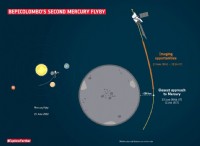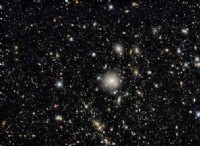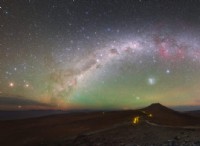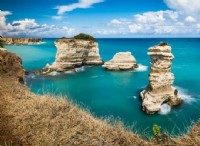코스모스의 유아기를 제 시간에 보시고 첫 번째 별이 깜박 거리는 것을 목격하려면 먼저 집처럼 큰 거울을 갈아야합니다. 표면이 너무 매끄러워서 거울이 대륙의 규모라면 발목 높이보다 언덕이나 계곡이 없습니다. 거울과 부드러운 거울만이 하늘에서 가장 먼 은하에서 오는 희미한 빛을 모으고 집중할 수 있습니다. 신비한 세력이 어둠 속에서 공모하고 첫 번째 별의 작물이 빛나기 시작했을 때, 우리가 여전히 태어나는 과정에서 우리가 볼 수있는 가장 희미하고 가장 먼 은하.
그러나 우주 역사의 초기 장을 읽으려면 - 아마도, 아마도 아마도 아마도 아마도, 아마도 gargantuan 스타들의 본질을 배우고, 중력이 그들을 동원하는 보이지 않는 문제, 그리고 자기와 난기류의 역할, 그리고 거대한 검은 구멍이 어떻게 성장하고 Galax 's Centers로 나아 갔는지에 대해 배우는 것입니다.
는 거의 충분하지 않습니다.아무도 은하계 형성의 시대를 보지 못한 이유는 고대 별빛이 수십억 년 동안 공간의 넓은 구조를 통해 우리를 여행 한 후 우리를 여행 한 후에 우리를 여행 한 후에 뻗어 있기 때문입니다. 하늘에서 가장 먼 별들에 의해 흩어져있는 자외선과 가시 광선은 이곳 여행 중에 약 20 타온 더 길은 파장으로 뻗어 적외선 방사선이되었습니다. 그러나 적외선 빛은 우리가 열이라고하는 원자-압기 광의 일종, 우리 몸과 대기에서 발산되는 것과 같은 열, 발 아래의 땅을 나타냅니다. 아아,이 지역 열원은 원시 별의 불쌍한 불꽃을 늪에 빠뜨립니다. 그 별들을 인식하려면 큰 완벽한 거울이있는 망원경은 매우 차갑습니다. 우주로 시작해야합니다.
캐치는 하우스 크기의 거울이 너무 커서 로켓 페어링에 맞지 않는다는 것입니다. 그러므로 거울은 접어야합니다. 거울은 세그먼트가있는 경우에만 접을 수 있습니다. 단일 중단되지 않은 표면 대신에 거울 세그먼트의 벌집 배열 인 경우. 그러나 공동으로 날카로운 이미지를 만들려면 공간에서 자율적으로 전개 된 후 미러 세그먼트는 사실상 완벽한 정렬되어야합니다. 중점을 달성하기 위해서는 훌륭하게 정밀한 모터가 필요합니다. 바이러스가 모두 제자리에있을 때까지 각 거울 세그먼트를 절반으로 늘릴 수있는 모터.
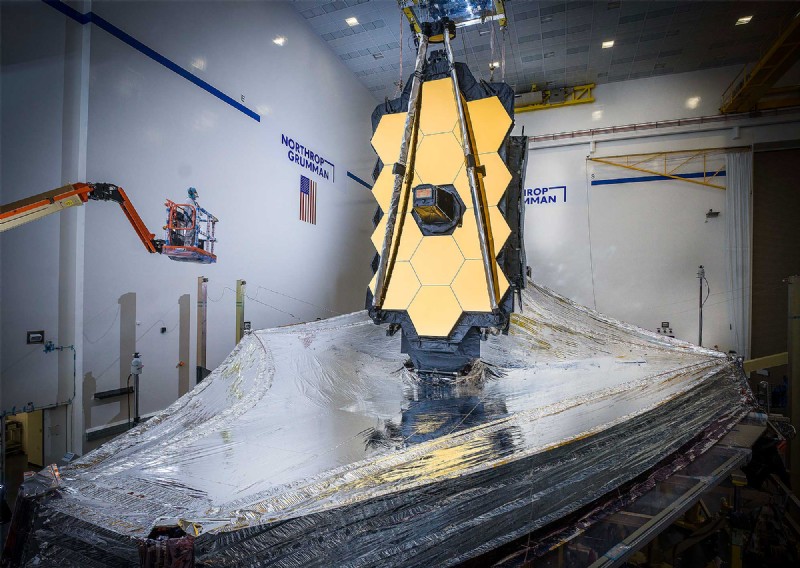
희미한 적외선 소스를 볼 수있는 능력은 빅뱅 이후 대략 5 천만 년에서 대략 5 천만 년 사이에 우주의 형성 장에 접근 할 수있는 능력이 아니라 다른 별의 특성에서 다른 별의 속성에서 공간이 확대되는 지구 규모의 특성에서도 우주의 중요한 측면과 마찬가지로 다른 점을 밝힐 것입니다. 그러나 망원경이 작동하기 위해서는 하늘에 쏘인 후 자율적으로 전개되고 초점을 맞추는 완벽한 거울 너머로 하나의 요소가 더 필요합니다.
외부 공간에서도 지구, 달, 태양은 여전히 망원경을 너무 가열하여 우주에서 가장 먼 구조물의 희미한 반짝임을 인식합니다. 즉, 망원경은 Lagrange Point 2라는 달보다 지구에서 4 배 더 멀리 떨어진 특정 지점으로 향하지 않는 한, 달, 지구, 태양은 모두 같은 방향으로 놓여 테니스 코트 크기의 선시 리드를 세우면서 망원경이 한 번에 세 몸을 차단하게합니다. 이런 식으로 음영 처리 된 망원경은 마침내 깊은 냉기로 들어갈 수 있으며 오랫동안 우주 새벽의 연약한 열을 감지합니다.
Sunshield는 적외선 망원경의 유일한 희망과 Achilles Heel입니다.
로켓의 무게를 측정하지 않고 충분한 비율로 펼치려면 선천리드는 얇은 직물로 구성되어야합니다. (거울, 카메라 및 기타 기기, 송신기 및 전원을 포함한 그 문제에 대해 전체 전망대 전체는 대형 지상 망원경의 전형적인 질량의 약 2% 만 있어야합니다.) 거대한 가벼운 적외선 감지 우주선을 만드는 것은 쉽지 않지만, 피할 수없는 원단의 사용은 고유 한 관계가 있습니다. 직물은 엔지니어들이“비 결정적”이라고 말하면서, 그 움직임은 완벽하게 통제하거나 예측할 수 없다고 말합니다. 선실이 펼쳐지면서 튀어 나오면 망원경 전체가 우주 쓰레기로 변합니다.
현재, 믿을 수 없을 정도로 건축 된 망원경은 접 히고 Ariane 5 로켓 위에 놓일 준비가되었습니다. 로켓은 12 월 22 일 프랑스 기아나 쿠 로우 (Kourou)에서 이륙 할 예정인 James Webb Space Telescope (JWST)가 처음 구상되고 스케치 된 지 30 년이 지난 후 12 월 22 일. 망원경은 일정 14 년 뒤, 예산보다 20 배입니다. NASA 주도 프로젝트의 최고 과학자 인 노벨상을 수상한 천체 물리학자인 존 매더 (John Mather)는“우리는 모든 실수와 시험과 연습을하기 위해 최선을 다했습니다. 이제 그는“우리는 폭발물 재료의 스택 위에 Zillion-dollar 망원경을 넣을 것”이라고 말했다.
.지난 30 년 동안 JWST의 발전에 대한 이야기는 Webb의 전임자로 인해 우주에 대한 이해에서 우리가 한 엄청난 진전과 유사했습니다. 허블 우주 망원경을 통해 우리는 별, 은하 및 초대형 블랙홀이 우주 역사상 훨씬 일찍 존재했으며 그 이후로 급진적 인 변화를 겪었다는 것을 알게되었습니다. 우리는 암흑 물질과 암흑 에너지가 우주를 조각한다는 것을 배웠습니다. Kepler 망원경과 다른 사람들을 통해 우리는 모든 방식의 행성들이 우리 은하수의 수십억의 잠재적 인 거주 가능한 세계를 포함하여 크리스마스 트리의 침대와 같은 은하를 장식하는 것을 보았습니다. 이러한 발견은 James Webb Space Telescope가 해결할 수있는 의문을 제기했습니다. 천문학 자들은 다른 망원경과 마찬가지로 목격이 새로운 질문을 제기하기를 희망합니다. Mather는“새로운 장비를 만들 때마다 놀랍습니다.”라고 말했습니다.
이 발사는 천문학 자 Natalie Batalha가“6 개월의 핀과 바늘”이라고 불렀던 것을 시작할 것입니다. 천문대는 라그랑주 포인트 2에 1 백만 마일을 떠올리게 될 것입니다. 도중에, 그것은 천상의 물 백합으로 변모하여 더 큰 은색 잎 위에 금도금 거울 세그먼트의 거대한 꽃을 배치 할 것입니다.
.하버드 대학교 (Harvard University)의 천체 물리학자인 그랜트 트레 블레이 (Grant Tremblay)는 망원경의 시간 할당위원회에서 근무한“우리 자신의 '감히 강력한 것들'의 순간이 될 것입니다. “놀라운 일을 할 것입니다. 우리는 뉴욕 타임즈 에있을 것입니다 이것이 시간의 가장자리에서 별의 탄생을 목격하는 방법에 대해 이야기하면서, 이것은 가장 초기의 은하 중 하나이며, 이것은 다른 지구의 이야기입니다.”
Tremblay는 그의 눈이 위쪽으로 펄럭이는“제발 일하십시오
매끄럽게부터 울퉁불퉁 한
NASA가 마지막으로 1990 년에 허블 우주 망원경 (Hubble Space Telescope)을 시작한 것은 재앙이었습니다. 베테랑 천문학 자 산드라 파버 (Sandra Faber)는“절대적으로 치명적입니다. Faber는 메릴랜드 주 그린 벨트에있는 NASA의 Goddard Space Flight Center에서 장애를 진단하는 팀에있었습니다. Hubble의 사진 중 하나의 별이 반지처럼 보이는 방식으로부터, 그녀와 동료는 1 차 거울 (1 차 거울)이 2 차 거울로 빛을 튕겨 카메라 렌즈에 반사 한 것으로 밝혀 졌다고 추론했다. 가장자리 주위에서 반 파장이 너무 두껍습니다. 일차 및 2 차 거울이 발사 전에 함께 테스트 된 경우,이 수차가 눈에 띄었을 것입니다. 그러나 오랫동안 지연되고 과도한 예산 망원경을 얻기 위해 서두르면 그 테스트는 결코 일어나지 않았습니다.
일부 NASA 지도자들은 이미 논란의 여지가있는 프로젝트였던 망원경을 포기할 것을 촉구했습니다. 대신, 메릴랜드의 바바라 미 쿨 스키 상원 의원은 구조 임무를위한 기금을 확보했습니다. 허블은 적외선이 아닌 무지개의 색상에 민감한 광학 망원경으로서 백만 마일 떨어진 곳에 여행하는 대신 340 마일 떨어진 저 지구 궤도에서 명확한 전망을 얻을 수 있기 때문에 고정 가능했습니다. 1993 년에 우주 왕복선은 허블과 도킹되었고 우주 비행사는 일종의 콘택트 렌즈를 설치했습니다. 망원경은 천문학과 우주론에 혁명을 일으킬 것입니다.
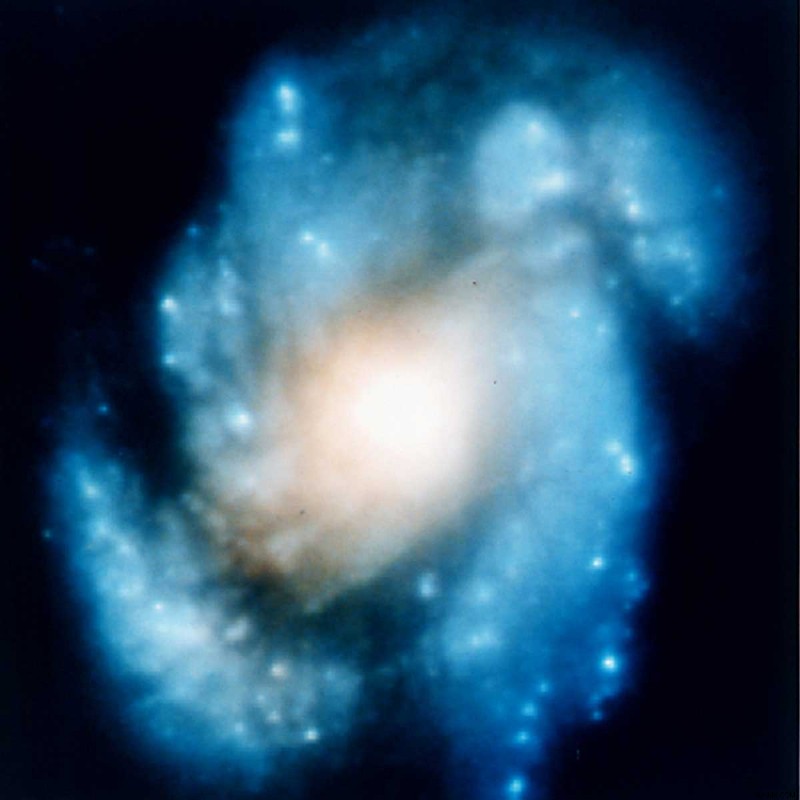
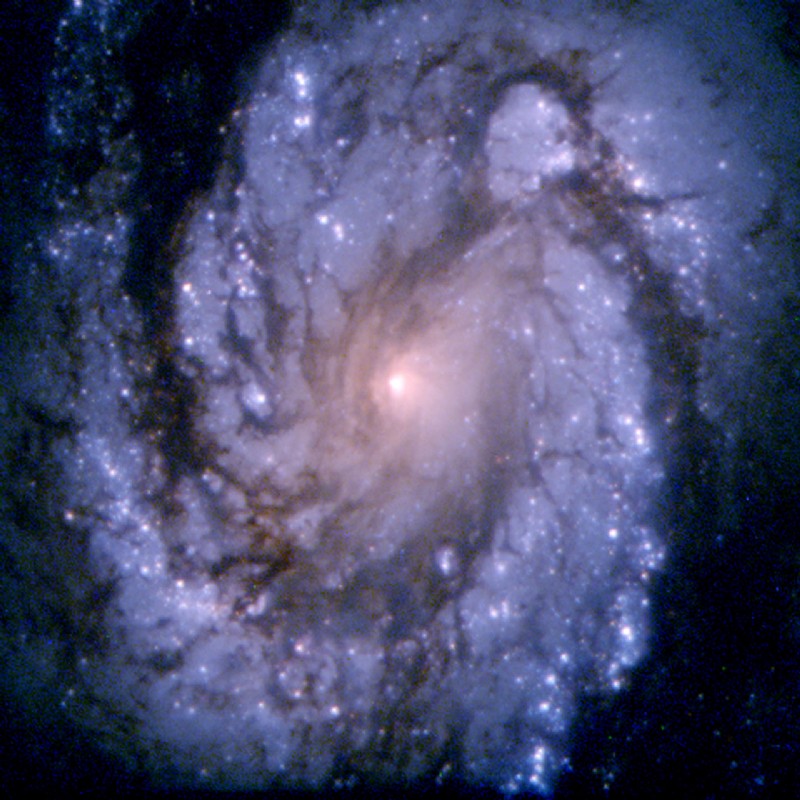
아마도 20 세기의 우주에 대한 가장 중요한 질문은 아마도 시작이 있었는지 아니면 항상 이런 식으로되었는지 여부였습니다. 영국의 우주 학자 인 프레드 호글 (Fred Hoyle)과 후자의“정상 상태”이론의 다른 신자들에게“매력적인 논리는 단순했다”고 매디슨 위스콘신 대학교의 천문학 자이자 명예 교수 인 제이 갤러거 (Jay Gallagher)는 말했다. "어느 시점에서 무언가가 바뀌었고 우주는 물질을 만들어 냈습니다. 왜 그렇게해야 했습니까?" 꾸준한 국가 지지자 인 호일은“빅뱅”에 대한 라이벌들의 믿음이 창세기의 영향에 기인했다.
그런 다음 1964 년 뉴저지의 Bell Labs에서 라디오 안테나에 히스가 나왔습니다. 히스는 빅뱅 이론에 의해 예측 된 바와 같이 하늘의 모든 곳에서 도착하는 전자 레인지에 의해 생성되었습니다. (조명은 뜨겁고 밀집된 우주가 식 으면서 초기 단계 전환에서 방출되었습니다.) 우주 전자 레인지 배경의 발견은 호일과 같은 꾸준한 상태의 사람들이 해석을 불신하고 수십 년 동안 그들의 이론에 매달린 토론을 즉시 끝내지 않았습니다. 그러나 빅뱅이 보았을 때 후주를 인식 한 다른 사람들에게는 CMB가 퍼즐을 만들었습니다. 하늘의 모든 부분에서 나오는 전자 레인지의 거의 완벽한 균일 성은 신생아 우주가 놀랍게도 매끄 럽음을 나타 냈습니다. 60 년대 후반에 은하계를 공부하는 대학원생이었던 Faber는“퍼즐은 오늘날 우리는 오늘날 매우 울퉁불퉁 한 우주를 본다. "따라서 은하계를 이해하는 첫 번째 과제는 우주가 어떻게 매끄럽게 진행되는지 이해하는 것입니다."
우주론 학자들은 중력 때문에 원자가 점차적으로 뭉쳐져서 별과 은하와 같은 구조로 파괴되어야한다는 것을 알고있었습니다. 그러나 종이에서는 구조의 성장이 매우 느린 것처럼 보였습니다. 물질은 처음에는 원활하게 분포되어 중력에 의해 특정 방향으로 당겨지지 않았을뿐만 아니라 공간의 확장과 빛 자체에 의해 생성 된 압력은 물질을 분리하여 약한 중력 매력에 대응하기 위해 노력했을 것입니다.

암흑 물질을 입력하십시오. 1970 년대 워싱턴 카네기 연구소의 베라 루빈은 은하의 외곽이 마치 보이지 않는 중력의 원천으로 채찍질하는 것처럼 예상보다 훨씬 빠르게 회전한다는 것을 관찰했습니다. Dark Matter로 불리는 은하계와 주변의 실종 된 물질에 대한이 증거는 Fritz Zwicky의 1930 년대 관찰과 일치하여 은하가 빛나는 물질만을 기반으로 해야하는 것보다 서로를 더 끌어들이는 것처럼 보였습니다. 또한 70 년대에 Princeton University의 Jim Peebles와 Jerry Ostriker는 별, 가스 및 먼지만으로 구성된 회전 은하 디스크가 불안정 해져 구체로 부풀어야한다고 계산했습니다. 그들은 보이지 않는 문제가 눈에 보이는 디스크가 회전하는 더 강력한 중력을 만들어야한다고 주장했다. 1979 년 Faber와 Gallagher는 암흑 물질에 대한 모든 증거를 컴파일하는 영향력있는 종이를 썼는데, 이는 우주의 문제의 약 90%를 기록했습니다. (현재 추정치는 약 85%입니다.)
이 연구자들은 빛의 압력에 대한 실질적인 중력과 불완전 함이 초기 우주에서 비교적 빠르게 무리를 낼 수 있다는 것을 깨달았습니다. 우주론에 대한 그의 기여로 2019 년 노벨 물리학상의 절반을 수상한 Peebles는 암흑 물질 입자가 덩어리 (후광으로 알려진)로 함께 빛나는 질적 그림을 개발하여 더 크고 더 큰 덩어리로 결합했습니다. 영국 천체 물리학 자 Simon White는 1980 년대 원시 컴퓨터 시뮬레이션 에서이“계층 적 클러스터링”프로세스를 시연했습니다. 그 당시 눈에 보이는 물질은 시뮬레이션하기에는 너무 복잡했지만, 연구자들은 대기업이 승차감을 위해 빛나는 물질을 가져 왔을 것이라고 추측했다.
대부분의 우주 학자 들이이 그림을 확신하게되었지만, 큰 문제는 초기에 설정된 물질 밀도의 변화가 어떻게 중력 클러스터링 과정을 시작하는지에 대한 큰 의문이었습니다. “사람들은 우주 구조의 형성에 대한 합리적인 초기 조건이 무엇인지 명확하게 생각하지 못했습니다. "이러한 시뮬레이션을 실행할 수는 있지만 처음에 무엇을 넣어야하는지 전혀 몰랐습니다."
우주 학자 인 앨런 거스 (Alan Guth)는 1979 년 노트북에 흠집을 내 렸습니다. 그는 빅뱅 (Big Bang)이 시작될 때 풍선 표면처럼 공간이 갑자기 터지면 어떻게 그렇게 거대하고 매끄럽고 평평 해졌다고 계산했습니다. Guth가 Primordial Growth Spurt라고 불렀을 때 우주 인플레이션은 빅뱅 애드온으로 빠르게 인기를 얻었습니다. 우주 학자들은 곧 인플레이션 중에 우주 구조의 양자 변동이 우주가 터져 우주 전체에 미묘한 밀도 변화를 일으킬 때 얼어 붙었을 것이라고 언급했다. 인플레이션에 의해 생성 된 추정 조밀 한 반점은 미래의 구조물의 씨앗 역할을 할 수있었습니다.
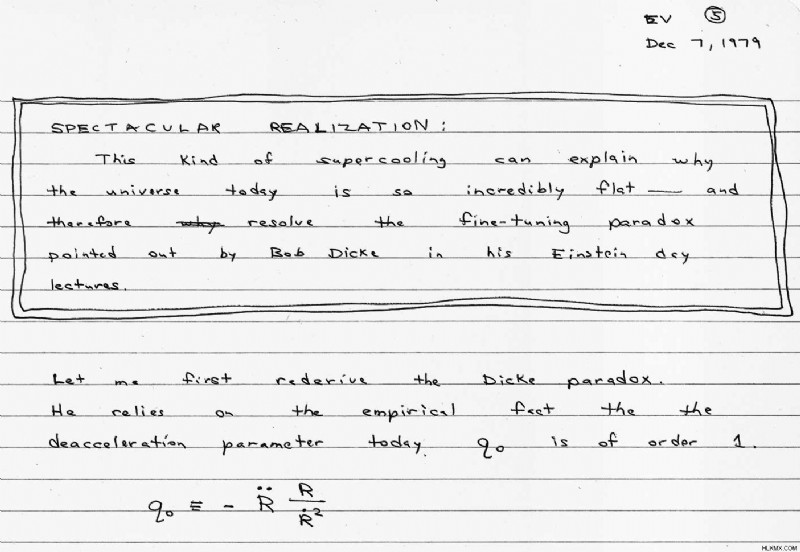
이 작은 밀도 변화는 실제로 1990 년대 초 CMB에서 측정되었습니다. Webb 망원경의 최고 과학자 인 그의 노벨 인 John Mather를 얻었습니다. 그러나 그들이 측정하기 전에도 Faber와 같은 사람들은 음모에 밀집된 반점을 일하고있었습니다. 1984 년에 그녀와 3 명의 공동 저자는 자연에서 논문을 출판했습니다. 그것은 모든 것을 함께 묶었습니다. 그녀는“인플레이션이 어떻게 변동을 만들 수 있는지, 그리고 나중에 은하를 만들기 위해 변동이 무엇을 할 것인지에 대한 최초의 수프 투 넛에 대한 설명”이라고 말했다.
그러나이 이야기는 처음부터 끝까지 추측되었습니다. 그리고 그것이 광범위하게 사실이더라도 주요 날짜와 세부 사항은 알려지지 않았습니다.
허블 망원경의 가장 영향력있는 발견 중 하나이며, 후임자 인 Webb를 구축하기위한 주요 원동력은 1995 년에 시정 렌즈가 설치 된 지 2 년 만에 발생했습니다. Webb의 Hubble의 운영 센터 인 Baltimore의 Space Telescope Science Institute의 이사 인 Bob Williams는 일부 박사후의 Docs의 제안에 따라 그의“감독의 재량 적 시간”을 100 시간 동안 헌신하기로 결정했습니다. 이 아이디어는 덜 민감한 망원경의 범위를 넘어 숨어있을 수있는 엄청나게 희미하고 먼 물체를 찾는 것이 었습니다.
동료들은 이것이 낭비라고 생각했습니다. John Bahcall이 늦은 후반은 윌리엄스와 이야기를 나누려고했습니다. Bahcall과 그의 아내 인 Neta Bahcall, 잘 알려진 천체 물리학 자들은 별과 은하계와 같은 구조가 우주 역사에서 비교적 늦게 일어났다 고 생각하는 데 전형적이었습니다. 그렇다면 희미하고 멀리 떨어져있는 긴 대상을 해결하려고 시도하는 것은 아무도 존재하지 않기 때문에 작동하지 않을 것입니다. Bahcalls와 다른 많은 이론가들은 Williams의 사진이 어두워 질 것이라고 생각했습니다.
그러나 100 시간 노출되는 동안 보물 상자의 뚜껑이 열렸습니다. 작은 사각형의 작은 사각형은 모든 모양, 크기 및 색조의 수천 은하로 반짝입니다. 천문학 자들은 기절했다.
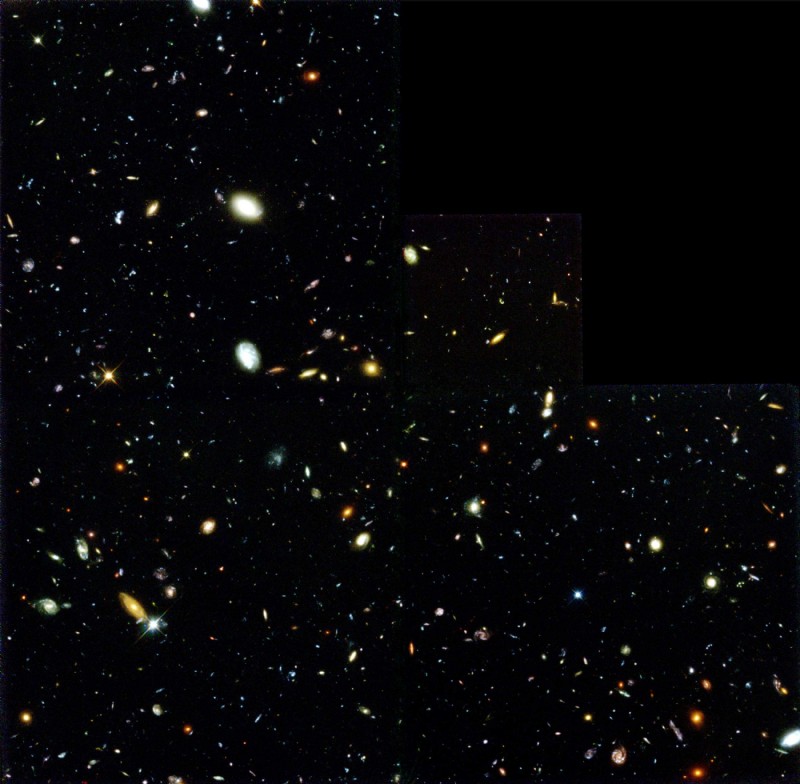
허블 딥 필드 사진의 더 멀리 떨어진 은하계는 붉은 색으로 보입니다. 여기에는 공간이 확장되어 여기에 도착하여 더 긴 파장으로 뻗어 있거나“적색 편이”되었기 때문에 빛이 더 오래 이동했기 때문입니다. 이 색상 코딩을 통해 Deep Field 이미지는 우주의 3D보기와 은하 진화의 타임 라인을 제공합니다. 은하는 모든 연령대와 발달 단계에 나타납니다. 우주가 시간이 지남에 따라 급진적으로 바뀌 었다는 증거입니다. Faber는“창문 밖으로 나가서 다시는 들리지 않아도 안정적인 상태 이론이었습니다. "그것은 큰 지적 획기적인 혁신이었다. 망원경으로 하나의 사진을 찍을 수 있고, 시간을 되돌아 볼 수 있었고, 우주가 그 당시 다른 짐승이라는 것을 알 수있다."
사진은 우주에서 밝은 물체가 대부분의 전문가보다 훨씬 빠르게 더 빨리 형성된다는 것을 보여주었습니다. 이것은 그들이 중력의 힘만으로 형성되지 않았다는 이론을 강화했지만 암흑 물질 후광을 병합하는 뒷면에 옮겨졌다.
초기의 은하는 이상하게 보였습니다. 백조로 자라는 데 수십억 년이 걸리는 못생긴 오리 같은 작고 흐트러졌습니다. Faber는“오늘날의 아름다운 [나선형 및 타원형 은하]가있는 아름다운 우주는 실제로 늦은 발전입니다.”라고 Faber는 말했습니다. 오리클링 은하 중 일부는 충돌하고 병합되어 우주 구조 성장의 계층 적 군집 이론을 지원했습니다. 그리고 장거리 은하의 별 덩어리는 놀랍게도 밝았으며, 이는 별이 현대의 햇볕에 유형 된 별보다 훨씬 더 거대하고 빛나고 있음을 나타냅니다.
천문학 자들은 대부분의 은하가 피크 광도에 도달하여 "redshift 2"주위에 가장 빨리 별을 형성한다는 것을 관찰했습니다. 이는 빅뱅 이후 약 20 억 년에 해당하는 시간에 따라 빛의 거리에서 방출 된 파장이 두 배로 늘어났습니다. 그 후, 이제는 은하계의 중심에서 자라는 신비한 초대형 블랙홀과 관련이 있다고 생각했습니다. 많은 은하가 어두워졌습니다.
그러나 딥 필드 사진에서 볼 수있는 갤럭시 진화의 타임 라인에 대한 가장 놀라운 점은 시야가 시작되지 않는다는 것입니다. 허블의 유리 눈이 볼 수있는 한 은하가있었습니다. 우주 비행사들이 망원경에 설치 한 업그레이드 된 카메라로 찍은 더 깊은 필드 사진에서도 빛의 얼룩은 빅뱅 이후 약 5 억 년에 해당하는 Redshift 10만큼 잠정적으로 발견되었습니다. 이제 구조물이 그 전에 수억 년 전에 구조가 형성되기 시작했을 것으로 생각됩니다.
그러나 형성 과정에서 은하, 그들의 문제는 처음으로별로별로 조각화되는 문제가 너무 멀리 떨어져서 허블이 감지하기에는 너무 희미하며 너무 붉은 편이. 그것들을 보려면, 우리는 더 크고 적외선 감지 망원경이 필요합니다.
Neta Bahcall은“Hubble이 Hubble Deep Field와 함께하는 데 성공한 것은 우리가 생각했던 것보다 훨씬 높은 붉은 편이에 은하가 있다는 것을 발견하는 것입니다. "제임스 웹에 대한 질문은 언제 시작되었고 어떻게 일찍 시작했는지입니다."
.행성을 wazoo
1995 년 10 월, 허블 (Hubble)이 아무것도 쳐다 보지 않고 시간의 역사를 엿볼 수있는 두 달 전인 스위스 천문학 자 미셸 시장은 이탈리아 피렌체에서 열린 회의에서 또 다른 주요 발견을 발표했다.
캘리포니아의 대학원생 인 나탈리 바탈 하 (Natalie Batalha)는 시장의 강당 뒷면에서 방금 들어 본 것의 중요성을 등록하지 못했습니다. Batalha는 최근 그녀의 가상 배경에서 별을 공전하는 3 개의 행성으로 구성된 3 개의 행성에 의해 틀에 박힌“이런 일이 일어나는 일이 재미있다”고 말했다. "이것은이 새로운 Exoplanet 탐사 시대의 새벽 이었지만 내 인생에서도 변화적인 순간 이었지만 아직 몰랐습니다."
.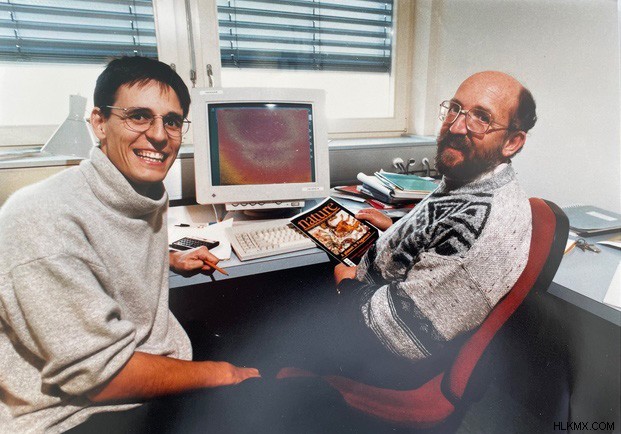
당시에는 Exoplanet Searching이 과학적 역류였으며 시장과 Queloz의 방법은 긴 샷처럼 보였습니다. 별빛을 색상 구성 요소로 분할하는 분광기를 사용하여 100 개 이상의 햇볕에 쬐인 별을 모니터링하여 도플러 시프트를 감지하기를 희망했습니다. 이것은 별이 궤도 행성의 중력에 의해 방해되기 때문에 별이 흔들리고 있음을 나타낼 수 있습니다. 이 기술은 행성이 가장 무겁고 호스트 스타에 가까워 야하기 때문에 가장 잘 사용 가능한 분광기로 볼 수있을 정도로 별을 만들기 위해 호스트 스타에 가까워 야했기 때문에이 기술은 광대 한 것처럼 보였다. 그러나 시장과 Queloz는 50 년의 빛의 해인 51 페가시를 보았을 때, 흔들림은 거대했습니다. 다른 가능성을 제거하면서 목성 크기의 행성이 4.2 일마다 한 번씩 우리의 태양과의 거리보다 8 배 더 가까운 별 주위를 휘젓는 것으로 판단했습니다.
.시장과 Queloz는 외계 행성 (그리고 결국 2019 년 노벨 물리학상의 나머지 상반기, Peebles와 공유), 51 Pegasi B는 태양계가 어떤지에 대한 교과서 이해를 한 손으로 향상 시켰습니다. 행성 과학자 Heidi Hammel이 말했듯이,“우리는 우리의 태양계가 어떻게 형성되는지에 대한 사랑스러운 동화를 배웠습니다.”는 바위 행성이 왜 별에 가까워지는 동안 거대한 가스와 얼음 행성이 멀리 떨어져있는 이유를 설명하기 위해 설계되었습니다. 그렇다면“뜨거운 목성”인 51 Pegasi B는 무엇입니까?
Batalha는 플로렌스에서 시장의 프레젠테이션 인 침묵에 대한 청중의 반응을 기억합니다. 그러나 곧 회의론은 더 인기있는 주제의 발견을 주었다. 망원경과 기술이 개선됨에 따라 다른 외계 행성도 나타났습니다. 그 날 피렌체에서 16 년 후, Batalha는 NASA 팀을 이끌었습니다. NASA 팀을 이끌었습니다.
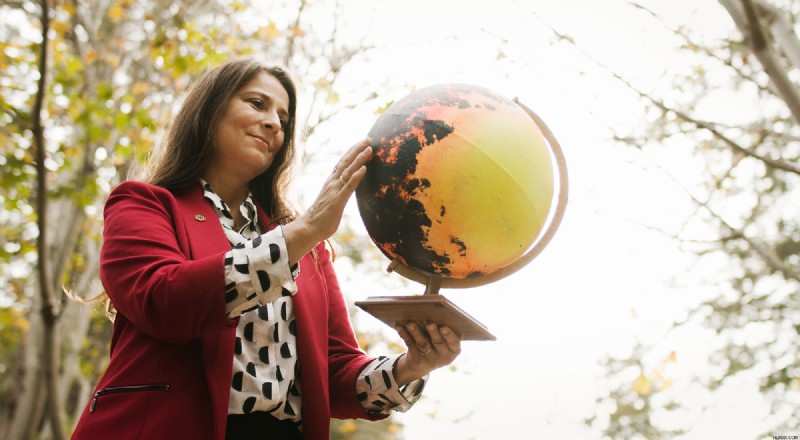
캘리포니아 이스트 베이에서 자라면서 바탈 하 (나탈리 스타우트)는 과학에 대해 거의 생각하지 못했지만 1983 년 샐리 라이드 (Sally Ride)의 우주 여행으로 17 세의 나이에 흥분했지만 부모님 중 어느 것도 대학에 다니지 않았지만, 그녀는 버클리 캘리포니아 대학교 (University of California)에서 비즈니스 전공으로 입학했습니다. 그러나 그녀는 주말 2 학년을 위해 세탁을하는 동안 갑자기 자신에게 다음과 같이 말한 것을 기억합니다.“‘재능, 자원을 잊어 버리십시오. 내가 세상에서 무엇이든 할 수 있다면, 그것은 무엇입니까? '그리고 놀랍게도 대답은 즉시 나에게 왔으며 우주 프로그램을 위해 일하는 것이 었습니다.”
.그녀는 물리 수업에 등록했습니다. 그녀는 고군분투했지만 그것을 좋아했습니다. Batalha는 일상적인 일이 수학적 방정식으로 설명 될 수 있다고 Batalha는 말했다. “우주의 내 자리를 다르게 보게되었습니다. 나는 당신이 박막의 간섭을 설명하기 위해 방정식을 쓸 수 있다고 생각했다.
Batalha는 과학을 비즈니스와 결합시킬 것이라고 생각했습니다. 그녀는 수업을 계속하고 몇 안되는 지상 기반 적외선 망원경 중 하나 인 와이오밍 적외선 천문대에서 여름 인턴쉽을 시작했습니다. 그녀가 그곳에 도착했을 때, 그녀는 고문과 코호트에게 자신을 좋아하지 않았으며 과학자가 될 계획이 아니라고 말했습니다. 그러나 그녀의 고문이 그녀에게 일할 문제를 주었을 때, 그녀는 그것을 해결했을 때, 그녀는 그것을 해결했을 때, 나중에 출판물로 이어졌다. 그는 그녀에게“짧게 팔지 말라고”고 말했다.
항성 천문학자인 바리 (Basri)는 스타 스펙트럼을 분석하는 일을하게했다. 과학적 방법을 직접 경험하면서 그녀를 연결시켰다. 그녀는 또한 사무실 친구 인 Basri의 박사후과의 셀로 바탈 하하와 사랑에 빠졌습니다. 그녀는 그와 결혼하여 산타 크루즈 캘리포니아 대학교의 천문학 대학원에 갔으며 아들, 놀란과 딸 나타샤를 빠르게 연속적으로 가지고있었습니다. 두 명의 아이들이 뒤따를 것입니다. 그 시절에 브라질 인 그녀와 Celso Batalha는 캘리포니아와 리우데 자네이루 사이의 가족을 앞뒤로 옮겼습니다. 리오의 삶은 아름답지만 복잡했습니다. 그녀는 빈민가를 지나가고 도로 옆에서 탄탄한 시체를 보는 것을 기억합니다. 그들은 결국 베이 지역에 정착했습니다.
Batalha는 주로 천문학을 한 어머니를 고려할 때, Batalha는 회의에 참석하지 않았습니다. 그러나 1995 년 가을 비엔나에서 열린 별 분광 분광 회의에서 스타 스팟에 대한 새로운 데이터를 초대했을 때, 그녀는 가장 어린 아이를 돌보기 위해 유럽으로 부모님을 데려 가면서 예외를 제외했습니다. 그녀는 다음 주 피렌체에서 열린 행성에 대한 또 다른 회의를하기로 결정했습니다. Batalha는 두 번째 컨퍼런스의 마지막 날에 마지막 순간에 일정에 추가 된 대화를 위해 TV 카메라를 설정하는 것을 발견했습니다. "그러면 미셸 시장은 일어나서이 행성 발견에 대해 너무 무의식적으로 이야기합니다."라고 그녀는 말했습니다.
처음에 Batalha는 새로운 핫 목성에 대해 거의 생각하지 않았고 산타 크루즈에서 스타 스팟을 계속 공부했습니다. 1 년 후, 그녀는 Bill Borucki라는 실리콘 밸리에있는 NASA의 Ames Research Center의 과학자에 대해 들었습니다. Bill Borucki라는 이름은 가스 거인뿐만 아니라 지구 크기의 외계인을 감지 할 수있는 우주 망원경을 건설하기로 결정했습니다. Borucki는 대중 교통 방법을 사용하려고 계획했습니다. 시장과 Queloz가했던 것처럼 Starlight의 색상의 변화를 추적하는 대신, 스타 라이트의 강도에서주기적인 딥을 찾아 별 앞에서 궤도 행성을 가로 질러 작은 빛을 차단했습니다.
.Batalha는 이것이 효과가 있다고 생각하지 않았습니다. 그녀가 알듯이 스타 스팟은 지구와 거의 같은 크기입니다. 그래서 그녀는 작은 트랜스 팅하는 행성이 회전식 별을 휩쓸고있는 스타 스팟과 구별 할 수 없다고 생각했습니다. 그녀는 문제에 대해 Borucki에게 편지를 썼습니다. 그는 다시 썼고 NASA는 바로 그 이유 때문에 그의 제안을 부분적으로 거부했으며, 그녀는 Ames에서 그와 함께 로키 월드와는 별도로 스타 스팟을 말하는 방법을 알아 내기 위해 그와 함께 일할 것인가?
그녀는 그랬고 그들은했다. 다음에 NASA Greenlit Borucki의 제안과 Batalha는 프로젝트 과학자가되었습니다. Borucki와 그의 팀이 통과 행성의 딥을 찾기 위해 약 15 만 개의 별의 밝기를 지속적으로 모니터링하기 위해 설계된 Kepler Space Telescope - 2009 년 3 월에 들어 올렸습니다. Batalhas는 4 명의 아이들을 모두 플로리다 주 케이프 피나버 럴로 데려갔습니다.
.
케플러는 지구 규모 행성에 배달되었습니다. Batalha는“Kepler 10B는 우주선에서 돌아온 첫 10 일의 데이터에서 확인되었습니다. 그들이 시간이 지남에 따라 숙주 별의 밝기를 그래프로 만들었을 때, 딥은 눈에 보였다. 지상에서의 후속 관찰은 그것이 진정한 행성임을 확인했으며, 질량과 반경에 기초하여 바위가되어야했다. Batalha는 2011 년 1 월 유럽의 천문학 자들에 의해 Corot-7b라는 암석 외계 행성에 대한보다 잠정적 인 주장에 따라 분명한 탐지를 발표했습니다. Kepler 10B 나 Corot-7B는 물이 액체 인“거주 가능한 구역”이 아닌 부모의 별 근처에서 궤도를 뚫었 기 때문에 탐욕스러운 명칭을“지구와 같은”것으로 얻지 못했습니다. (최초의 바위가 많고 물이 많고 잠재적으로 지구 같은 행성 인 Kepler 186F는 2014 년에 헤드 라인을 만들었습니다. Batalha는 공식적으로 분석에 관여하지 않았습니다.)
케플러 망원경은 두 모터의 실패로 조기에 열광하기 전에 2,600 개 이상의 외계 행성을 발견했습니다. 천문학자가 통계적 특성을 연구하기에 충분한 수의 4,500 명 이상이 계산되었습니다. 51 페가시 B가 제안한 것처럼 우리 태양계는 비정형입니다. 예를 들어, 은하계에서 가장 일반적인 유형의 행성은 바위 행성과 거인 사이에서 우리가 가지고 있지 않은 크기입니다. 행성 천문학자는 아직 소위 슈퍼 고리 또는 하위 곤충의 잉여 또는 이러한 중소 규모 행성의 잉여 또는 형성 방법을 아직 이해하지 못합니다. 행성 형성과 진화의 새로운 원리가 필요합니다.
연구자들은 지금까지 데이터를 외삽하여 우리의 은하계는 수십억 개의 바위 같은 물이 많은 행성을 보유하고 있다고 생각하며, 생명도 일반적 일 수 있음을 시사합니다. 그러나 우리가 실제로 다른 행성에 서식하는 삶의 증거를 찾을 때까지 지구상의 출현은 우연이며 우리는 혼자 일 가능성이 여전히 남아 있습니다.
행복하게도 Webb 망원경은 다른 지구의 대기와 기후를 조사하기에 충분히 강력 할 것입니다. 또는 우리가 매우 운이 좋으면 실제 외계인 생물권의 증거를 찾습니다.
.Batalha는“적외선은 외계 행성에 환상적입니다
한 번의 파업과 당신은 입니다
1987 년 어느 날 아침, 우주 망원경 과학 연구소 (STSCI)의 이사이자 아직 출시되지 않는 허블 (Hubble)의 이사였던 천체 물리학 자 리카르도 지아 코니 (Riccardo Giacconi)는 가스 일링 워스 (Garth Illingworth) 부국장에게 허블의 후계자에 대한 생각을 시작하도록 요청했다. "나의 즉각적인 반응은‘Argh, 우리는 아직 Hubble을 발사하지 않았으며, 그곳에서해야 할 일이 백만 가지가 있습니다. 큰 문제가 있으므로 어떻게해야합니까?"라고 Illingworth는 최근에 회상했습니다. "그는``저를 믿으십시오.이 작업을 수행하는 데 시간이 걸리기 때문에 일찍 시작해야합니다."Hubble은 1970 년경부터 NASA 천문학 자 Nancy Roman이 초기에 주도한 Princeton의 Lyman Spitzer가 캠페인을 시작한 후 개발 중이 었습니다. 그들은 허블의 어머니와 아버지로 알려져 있습니다.
호주 출신 인 Illingworth는 프랑스의 STSCI 동료 Pierre Bely와 미국의 Peter Stockman과 함께 차세대 우주 망원경에 대해 브레인 스토밍했습니다. 그들은 기본적으로 계속할 것이 없었습니다. Illingworth는“우리는 허블을 넘어서서 그 일을 보완하고 새로운 지역을 탐험하는 것이 무엇인지 생각하기 시작했다”고 말했다. 적외선은지면에서 관찰하기가 엄청나게 어렵습니다. 트리오는 적외선 배경이 백만 배 이상 낮은 우주에서 볼 수있는 것이 많을 것이라고 생각했습니다. "강력한 새로운 능력을 발휘할 때 엄청난 과학적 지평을 열었습니다."
For an IR telescope to be as sensitive as Hubble, which has a 2.4-meter-wide primary mirror, Illingworth, Bely and Stockman realized that it would need to be significantly bigger, since it detects bigger wavelengths. They considered that the mirror might have to fold to fit in a rocket. They also knew it had to be cold, otherwise its heat would saturate its own sensors. Rather than actively cool the telescope, they thought to exploit the extreme frigidity of outer space by blocking the heat of the Earth, moon and sun. Their vague conception of a large, passively cooled infrared telescope, greatly elaborated upon, would become the cargo now awaiting launch in Kourou.
Leading astronomers convened at STScI in 1989 to discuss the science that an infrared space telescope might be good for. Discussions slowed during Hubble’s disastrous start and salvation, then picked up again in the mid-’90s. In 1995, John Mather, a reedy, gentlemanly astrophysicist at the Goddard Space Flight Center, got a call from NASA headquarters asking if he’d like to join the project. Realizing that an infrared telescope “would do so much for so many people,” he dropped everything and signed on. He’s been JWST’s top scientist ever since.
Mather calls himself a “theoretical instrument builder.” He started building telescopes as a kid in pastoral New Jersey, assembling parts from catalogs in the hope of getting a closer look at the surface of Mars. As a young man in the 1970s, Mather worked on a balloon-borne instrument that failed; he and his colleagues concluded that they hadn’t tested it enough before launch. “Murphy’s law had been proven one more time,” he wrote in an autobiographical account. But lessons learned led to the triumph of COBE, the NASA satellite experiment for which he and George Smoot would share the Nobel. In the early ’90s, COBE measured the subtle variations in the cosmic microwave background that are thought to have seeded all later cosmological structures. In Mather’s mind, theorizing about the cosmos is fine, but you need ingenious instruments to know anything for sure. “So let’s build the equipment,” he told me this fall. “To me that’s a heroic thing to do.”

Mather had contemplated wild designs, including telescopes that fold. In the difficult budgetary climate of 1996, however, a committee of top astronomers studying the infrared telescope concept proposed a 4-meter mirror, which would fit in a rocket fairing, dramatically cutting costs and complexity. Illingworth thought this was “stupid. It was not going to be as good as Hubble.” NASA’s leader at the time, Dan Goldin, evidently felt similarly. At the American Astronomical Society meeting that year, Goldin said in an address:“Why do you ask for such a modest thing? Why not go after 6 or 7 meters?” As committee member Wendy Freedman remembers it, “Goldin essentially said, ‘You guys are really a bunch of scaredy-cats.’” He got a standing ovation. “In my mind he saved the telescope,” said Illingworth. It would be bigger. It would also have to fold after all.
After some heady talk about 8 meters, in 2001 NASA finally settled on 6.5 meters for the segmented mirror’s diameter, giving the next-generation telescope more than six times Hubble’s light-collecting area. The question was:How can you fit a 6.5-meter-wide mirror in a 5.4-meter-wide rocket fairing?
“A big part of the design is how do you fold it up,” Mather said. Outside contractors developed competing mirror designs. Lockheed Martin’s mirror folded like six petals of a flower, Ball Aerospace’s like a drop-leaf tabletop. TRW proposed putting mirror segments in place the way an old jukebox puts records down. After mulling over the proposals for a year, Mather and his team adopted bits and pieces from each. The main contract went to TRW because of the company’s extensive experience building complex satellites for the U.S. military and its successful construction of the Chandra X-ray observatory. (TRW was soon purchased by Northrop Grumman.) The mirror design would be closer to Ball Aerospace’s:an array of 18 hexagonal segments forming a larger hexagon that would fold on two sides. Mike Menzel, who spearheaded Lockheed Martin’s proposal, was brought on by NASA as Webb’s chief engineer.
The mirrors would be made of beryllium — light, strong, stiff stuff that’s toxic in powder form (“Beryllium is a pain in the neck, but it’s the only thing that would work,” according to Mather). Powdered beryllium was pressed into blocks in Ohio, then cut to shape in Alabama. The 18 mirror segments were then topped with a layer of gold, which is supremely reflective of infrared light, and polished in a California factory built specifically for the purpose. “Shaping and polishing telescope mirrors is a dark art that goes back hundreds of years,” said Sarah Kendrew, a Belgian-British astronomer who works on MIRI, one of Webb’s instruments.
Motors with unprecedented finesse would be needed to bring the hexagonal mirror segments into collective focus in space. “That’s something we had to invent right away,” Mather said. “If you can’t do that, you can’t make the whole observatory work.” Ball Aerospace delivered actuators capable of nudging each of the gold hexagons in 10-nanometer increments, one ten-thousandth the width of a hair. Mather said the motors work by “flexing,” or “converting a big motion into a tiny motion,” though Ball’s design, despite being taxpayer-funded, is proprietary. “When we take a picture of the telescope we have to make sure no one could see the motors,” he said.

In 2002, the telescope got a name. NASA administrator Sean O’Keefe broke a tradition of naming telescopes for scientists — the Hubble telescope, for instance, refers to the American astronomer Edwin Hubble — and instead honored an earlier administrator, James Webb, who was head of the space agency during the Apollo era. The choice was immediately unpopular with astronomers and has grown increasingly so. Last year, 1,200 astronomers signed a petition to rename the telescope after claims that Webb either aided or chose to ignore the firing of gay government employees during the Lavender Scare. After an investigation, NASA announced in October that historians found no evidence warranting a name change.
Various institutions, from the University of Arizona to the European Space Agency, signed up to build the cameras, spectrographs and coronagraphs that will swivel into place at the focal point of the optics, slicing and dicing different chunks of the pooled infrared light. In exchange, these institutional partners will command extensive telescope time.
As for the sunshield, the flimsy material on which the infrared telescope’s fate rests, the team quickly settled on Kapton, a slithery silver plastic that looks like the inside of a potato chip bag but has the thickness of a human hair. Since it might tear, the sunshield would need many layers for redundancy — the team decided on five — and the layers would have to be unfurled, separated and held taut by a system of booms, cables and strings. Propulsion systems and solar panels would go on the sunward side, and the optics and instruments, which must operate below minus 223 degrees Celsius, would huddle on the dark side. “JWST has a lot of firsts, an awful lot of significant firsts,” Menzel, the chief engineer, told me, “but that sunshield is one of them.”
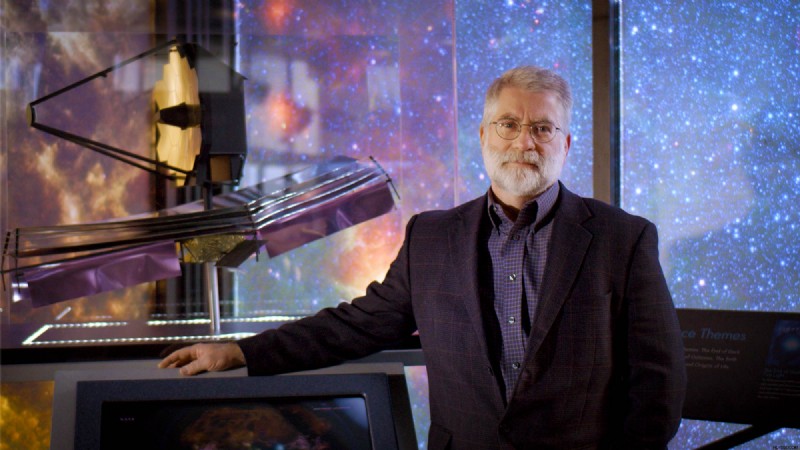
Menzel, who is thickset with a neatly clipped gray beard, oversees thousands of people’s work on one of the most complicated engineering projects in history; he’s also the type of person who tells you right away where they’re from. That would be Elizabeth, New Jersey — Exit 13 off the turnpike — where his father drove a cab. On a recent Zoom call, Menzel bent his arm back and forth at the elbow to explain the challenge presented by the sunshield. “If you take something rigid, like a door, and you build a nice hinge, you can predict the way that moves,” he said. “That’s a piece of cake.” He stopped bending his arm. “Now you got blankets. They’re floppy. Try to push on a blanket on your bed and predict the shape that it’s going to go in. It’s horrible. Same thing with a string — the strings that tension [the sunshield]. There’s a million different ways that a string can move.” It gets worse:“Now put all this experience in zero-G, where that stuff can go in places you just don’t want it to go.” Smoothly unfolding the sunshield “becomes a very tough problem.”
Around 2004, the NASA engineers Chuck Perrygo and Keith Parrish came into Menzel’s office at Goddard and said they had a way to do it. Perrygo picked up a piece of paper on Menzel’s desk and folded it into the shape of a Z. The sunshield could be folded into many more such zigzags, in what’s sometimes called an accordion fold. “I’m pretty good at recognizing a bad answer, and I’m pretty good at recognizing a right answer,” Menzel told me, holding up a piece of paper he had folded into a Z shape. “So we all saw that and thought, that’s a way to pursue it.” Northrop Grumman was separately coming to the same conclusion.
The next question was how to hold the accordion fold in place until the sunshield was ready to unfurl. A Northrop Grumman engineer, Andy Tao, found the solution:107 pins that retract like a cat’s claws.
The pin approach sprouted another tricky problem:pins make pinholes. If, after unfurling, pinholes on all five Kapton layers were to line up, this would let a sunbeam through, heating the optics. “It was one of those arcane little details that you’d never guess until you start getting into it and you start finding out, ah, Christ, five of the pinholes are lining right up and that’s going to let sunlight right in,” Menzel said. “It doesn’t sound like much, but it was driving Andy to drink. And God bless him, he figured it out.” Tao diligently sought out a suitable configuration of pins so that the holes in the five slightly-different-size Kapton layers would never align from any angle.
The moles were being whacked so slowly that astronomers began referring to the situation as “the JWST problem.” Back in 1996, Mather and his team estimated that the telescope would cost $564 million — a somewhat disingenuous guess aimed at getting Congress on board — and that it would launch in 2007. As the price tag soared and the launch date hopped ever farther into the future, Congress grew impatient. In 2011, JWST was nearly canceled, but elementary school students wrote letters to Washington and Senator Mikulski again came to NASA’s rescue.
Glass, metal and plastic gradually got bolted together in clean rooms at Goddard, Northrop Grumman, Ball Aerospace and elsewhere. But the assembled hardware couldn’t simply be sent skyward, because the telescope is going a million miles away, where astronauts with wrenches can’t visit. As Northrop Grumman engineer Jon Arenberg once put it, “This is a one-strike-and-you’re-out business.” Webb must deploy flawlessly on the first and only try. That means it had to be extensively, painstakingly tested on the ground. And in 2017 and 2018, these tests turned up one problem after another.
After a “shake test,” a bunch of screws and washers that had held the sunshield cover in place were found on the floor; they hadn’t been properly torqued. Another time, the sunshield caught on a snag and tore. Once, it unfolded, but not without a string wrapping around something it shouldn’t have.
The telescope got in another scrape when it was shipped to the Johnson Space Center in Houston, placed in the chamber where Apollo astronauts once practiced their moonwalks, and cryogenically cooled to simulate the conditions of outer space. While instrument builders like Sarah Kendrew were testing the cold hardware, Hurricane Harvey hit. The whole city catastrophically flooded, but the biggest worry for the Webb team was the liquid nitrogen supply. If it ran out, the telescope’s temperature would rise too quickly, damaging the instruments. The liquid nitrogen suppliers had to be urged to send trucks through the floodwaters as a matter of national importance.
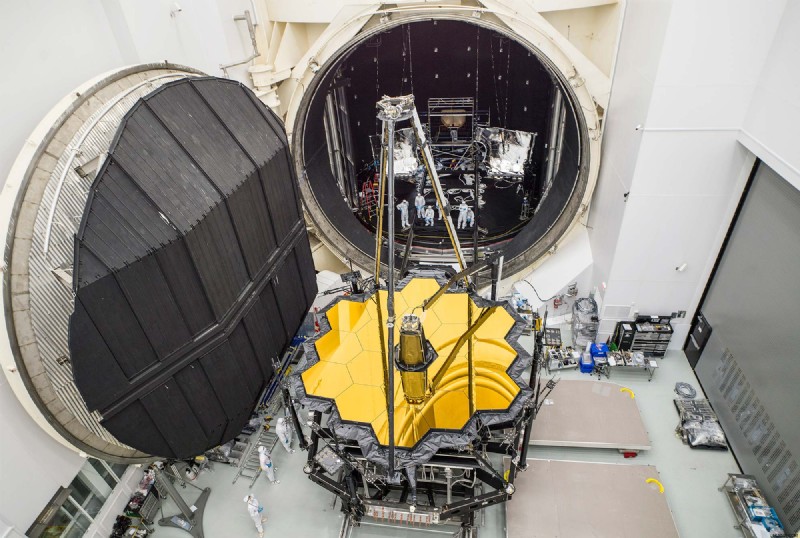
Problems continued. Earlier this year, the transponders that will blip data back to Earth were found to be faulty and had to be repaired. “A delay causes its own cascade of issues,” Tremblay said — and more expense:“It costs $10 million a month just to keep James Webb on the clean room floor.” As the investment rose, so did the need for the mission to succeed. “If NASA was willing to accept more risk, JWST would have been half the cost,” Tremblay explained.
Finally, problems abated. Northrop Grumman engineers successfully unfolded the sunshield several times at its facility in Redondo Beach, California. But according to Menzel, even after the shimmery layers have spread smoothly open, “we aren’t as elated as you might think. Because we all know that sunshield will only be as good as the last time it’s folded.”
Webb’s final cost approaches $10 billion. That’s nearly 20 times its sticker price, but still a few billion less than an aircraft carrier. Following some final pandemic-related delays, late 2021 became its target launch date. In September, the telescope passed a final test in Redondo Beach:Gold ears pinned back and blanket stashed away, the whole observatory was turned on its side, then righted, then checked to see whether anything had changed. Then it was put back on its side into a shipping container and taken away. Garth Illingworth, who has been involved with the telescope in a range of capacities since the beginning, went to Redondo Beach to see it off. There it had stood, “tall and majestic,” he wrote in an email. “By the next day the clean room was even empty of any JWST-related support hardware.” The exact date of the shipping container’s departure from California was kept quiet — a precaution against piracy on the high seas — but in early October it voyaged through the Panama Canal to French Guiana, a region near the equator where the European Space Agency launches its plus-size Ariane 5 rocket to exploit the extra kick of Earth’s rotation.
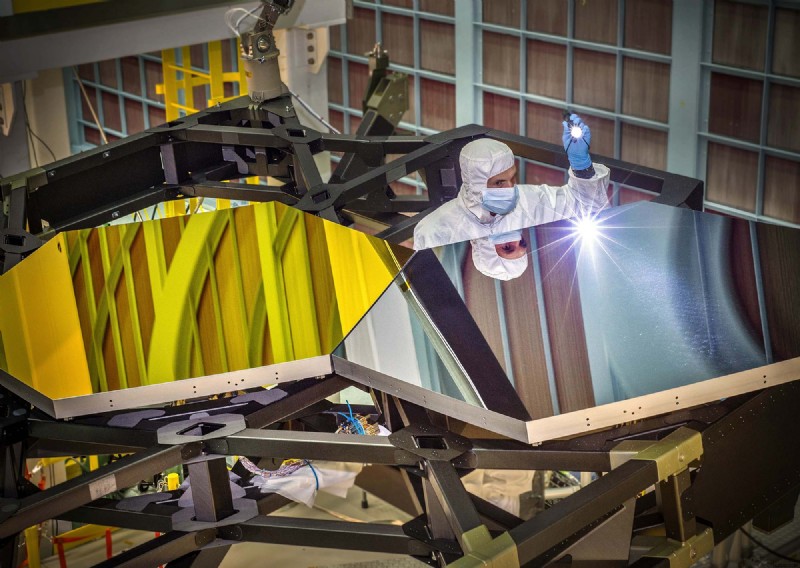

The Webb team is busy rehearsing the routines they’ll execute 24/7 out of Baltimore during Webb’s monthlong journey to Lagrange point 2, followed by its five-month commissioning period. “Do I feel confident?” said Menzel. "예. I feel confident that we’ve done everything we possibly could. The risk is acceptably low. It’s as good as it’s going to be. And I’m pretty confident that we’re going to do fine.
“Could something go wrong? Hell, yeah.”
Reasonable Guesses
Once the Hubble got working, humanity soaked up the sight of the cosmos like near-sighted kids wearing glasses for the first time. We also learned there was stuff out there that we couldn’t see.
In 1998, two rival teams of astronomers used the Hubble along with other telescopes to observe supernovas in distant galaxies and ascertain that the expansion of the universe is accelerating. This exposed the existence of an accelerating agent infusing all of space, known as dark energy. There’s so much space that dark energy makes up 70% of everything. (Another 26% is dark matter, and 4% is luminous atoms and radiation.)
Other puzzles soon turned up. The astronomer Wendy Freedman used Hubble to observe pulsating stars called cepheids. From these, in 2001 she and her team measured how fast the universe is currently expanding, achieving 10% accuracy, a huge improvement over previous measurements. In the years since Freedman’s measurement, the cosmic expansion rate has landed at the center of the biggest controversy in cosmology. The issue is that, based on the universe’s known ingredients and governing equations, theorists infer that space should currently be expanding more slowly than the measurements suggest. Its fast expansion may point to additional unknown ingredients in the cosmos beyond dark matter and dark energy. But Freedman, who is calm and authoritative, isn’t convinced yet that the measurements are right. She’ll lead a team that will use the Webb telescope to scrutinize cepheids and other stars more closely; they hope to measure the expansion rate precisely enough to tell for sure whether there’s an exotic fundamental ingredient afoot.
Meanwhile, the Hubble Deep Field photo told a rollicking story of galaxy evolution that dramatically expanded human knowledge of cosmic history. But it remains to Webb to read the crucial first couple of chapters of the story.
Marcia Rieke, a longtime professor at the University of Arizona regarded as one of the pioneers of infrared astronomy, has spent the last 20 years overseeing the design and construction of NIRCam (as in “near-infrared camera”), one of Webb’s four main instruments. She and her team at Arizona are planning to use more than half of their whopping 900 hours of guaranteed telescope time to do a new deep-field survey, one that will peer deeper into the past than ever before. Whereas Hubble could see the faint smudges of galaxies at redshift 10, corresponding to 500 million years after the Big Bang, Webb should be able to see those smudges very clearly and spot brand-new galaxies germinating farther away, perhaps as far back as 50 or 100 million years after the Big Bang.
Rieke and her team will do one better than the Hubble deep field. After using NIRCam to get an image of their dark patch of the sky, they’ll identify the galaxies in the patch that are farthest away and use NIRSpec, Webb’s near-infrared spectrograph, to take the galaxies’ spectra, from which Rieke and her colleagues can deduce their chemical compositions.
The spectrum will show which elements of the periodic table existed in each proto-galaxy, and how their elements evolved over time. The standard story is that early gas clouds, stars and galaxies mostly consisted of hydrogen, and supernovas and other explosive events gradually forged heavier elements. “But there are curious things,” Rieke said. “Close to the limit that Hubble can go to, there are quasars” — super-bright centers of galaxies powered by supermassive black holes — “and it looks like they have almost the same elements as the sun. Which is hard to believe. So there’s something that goes on early that we don’t have a good handle on.”
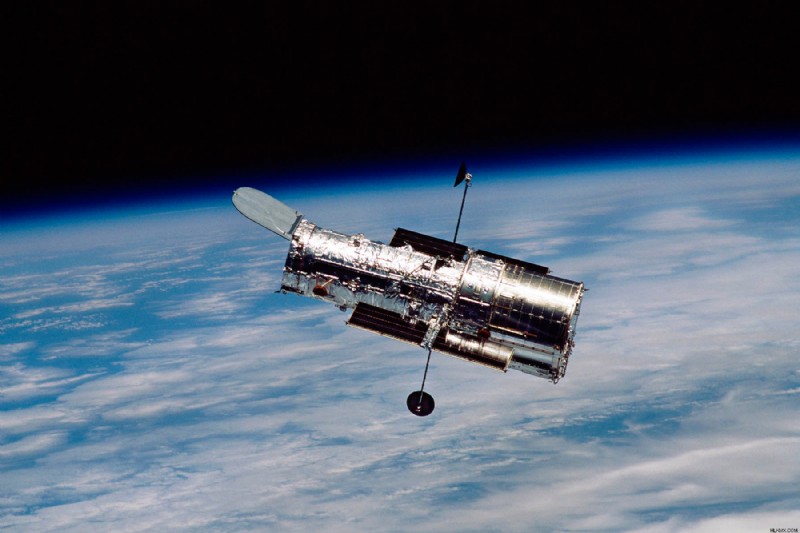
There are as many reasons for wanting to see the first stars and galaxies as there are astronomers, astrophysicists and cosmologists. For Risa Wechsler, a cosmologist at Stanford University, it’s a way to watch dark matter’s handiwork. She and her colleagues will use the proto-galaxies to deduce the distribution of sizes of dark matter halos that must have existed in the early universe, and when they formed. This can reveal whether dark matter is “cold,” that is, made of slow-moving particles, or “warm,” since particles that whizz around would have taken longer to huddle into halos. This temperature check would be a significant clue to dark matter’s nature.
Other researchers want to understand the first stars. Some think Webb will see so-called “Population III stars,” primordial beasts that are hypothesized to have been roughly 10,000 times heavier than our sun. Such stars would help solve another major mystery of galaxy formation:how galaxies’ centers ended up with supermassive black holes — physically small yet incredibly powerful gravitational sinkholes that can weigh billions of times the mass of our sun. Nobody knows how supermassive black holes grew so heavy, or when, or why their properties are correlated with properties of their host galaxies. One theory is that Population III stars seeded the holes, but there are a million other theories. Webb will look for signatures of the different scenarios.
Theorists have simulated many possibilities for how structures might have emerged in the young universe. But they can’t simply start with the cosmic microwave background and evolve that picture forward on the computer to see what happened. “A lot of the initial conditions are not well understood — things like the magnetic field, and how much turbulence there is in the gas,” said Peter Behroozi, a theorist colleague of Rieke’s at Arizona who simulates star and galaxy formation. It’s “a lot of work,” he said, to get from a large, ever-so-slightly dense spot in the cosmic microwave background to a tiny cloud of gas that will gravitationally contract and make a star.
“Oftentimes what people will do is, they’ll just skip that,” Behroozi said, and “start with a spherical cloud of gas. They don’t know what the distribution of [dark matter] clump sizes will be, so they guess. They don’t know about the magnetic field; they don’t know anything about the spin or turbulence of the gas, so they’ll fill all that in with guesses.”
The guesswork has accelerated recently as researchers race to get their predictions on record before Webb shows how star and galaxy formation really went down. Even conservative guesses can produce simulations with wildly different outcomes. “The main conclusion from my research,” Behroozi said, “is even if you try to make a reasonable guess, we still have no clue what James Webb will see.”
Bridge Planets
Natasha Batalha, Natalie Batalha’s second child, was 18 when she went to Florida for the Kepler launch. She remembers tagging along with her younger sister in the viewing room where the NASA science team had gathered. “During the launch, the anxiety that was in that space was chilling,” she said on a recent video call. After liftoff, the scene turned jubilant. She found it inspiring to see a team accomplish something so grand, but it was the possibility of discoveries being so close at hand “that was really what flipped on my brain to start thinking about exoplanets as a concept,” said Natasha Batalha, who is serious and precise, like her mother.
Space wasn’t a constant topic of discussion in the Batalha household. “I didn’t want to saturate their lives with science,” Natalie Batalha said. “I always wanted them to feel like they were number one.” But she and Celso did have “a secret hope” about Natasha. One evening in 1996 while Celso was teaching a night class, Natalie loaded up the half-asleep kids to drive them to a meadow so they look for the passing comet Hyakutake. Before they’d pulled out of the driveway, five-year-old Natasha said from the back seat:“What’s that?” She was pointing at the comet.
When Natasha was eight and living in Brazil, her mother asked her and her siblings to draw an astronomer. Natasha drew a white man, and Natalie asked her why. “This was crazy for me, the daughter of a Latinx scientist and a female scientist; I still had these stereotypes ingrained in my mind,” Natasha said. She suddenly felt empowered by the thought that she could belong in science.
A couple of years later she read Sally Ride’s autobiography. Just as her mother had been inspired by Ride, Natasha decided to become either an astronomer or an astronaut. She dreamed of being the first person on Mars. After the Kepler launch, as more and more exoplanets were discovered, she grew interested in the possibility of extraterrestrial life and how we might infer its presence on those planets through telescope observations of their skies. She got a dual Ph.D. in astronomy and astrobiology. Then, soon after Kepler ended and her mom left NASA Ames to become a professor at Santa Cruz, Natasha took a job at Ames studying exoplanet atmospheres.
Natasha Batalha is part of a growing research community whose ultimate goal is to detect “biosignature gases” — gases in a planet’s atmosphere that could only be there because of life. Every kind of molecule has characteristic wavelengths that it absorbs. So by collecting light from a star when a planet is and isn’t transiting in front of it, and checking which wavelengths of starlight grow dimmer when the planet is there, you can see which molecules are present in the planet’s sky.
Oxygen is an obvious candidate for a biosignature gas:It’s so reactive that it’s unlikely to be found unless the planet’s oxygen supply is continually replenished by, say, a biosphere doing photosynthesis. Photosynthesis is such a simple and efficient energy-capturing procedure that astrobiologists think it’s likely to evolve on any living planet, so oxygen is smart to look for.

But seeing oxygen by itself wouldn’t necessarily be convincing. Computer simulations show that under some conditions, oxygen can fill the skies of lifeless planets. “The challenge is there’s not one gas that’s going to be a biosignature gas,” said Hammel, the planetary scientist. “Methane on Earth is mostly produced by cows … but you look at Neptune, and you can see tons of methane there, and that’s not produced by cows.”
A better biosignature is a peculiar mix of gases. “It’s not going to be a single gas, it’s going to have to be a combination of gases in a configuration that tells us they are in a disequilibrium state,” said Hammel. “They can’t have formed that way naturally.”
Existing telescopes have already spotted molecular fingerprints in the skies of hot Jupiters, but these are lifeless planets. Detecting the weaker signals from rocky, possibly habitable planets’ skies will require JWST. Not only will the telescope have close to 100 times Hubble’s resolution, but it will see exoplanets far more clearly against the background of their host stars, since planets emit more infrared than optical light, while stars emit less. Importantly, Webb’s view of exoplanets won’t be obscured by clouds, which often prevent optical telescopes from seeing the densest, low-altitude layers of atmosphere. “Imagine being in a plane and looking down at an insane cloud deck, and you can’t see the surface at all,” Natasha Batalha said. “When you look at infrared light, you can all of a sudden see through the cloud deck.”
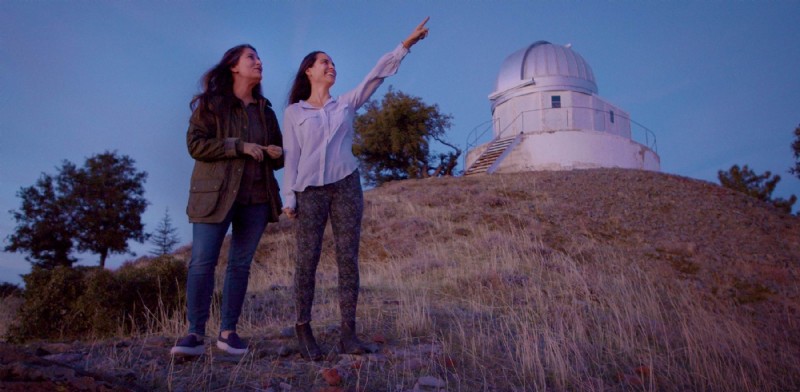
Exoplanets will be among the targets in JWST’s “Cycle 1” round of observations, which it will start tackling as soon as deployment and commissioning are complete — about six months after launch. The exoplanet community elected Natalie Batalha to lead transit spectroscopy studies of three gas giants as part of these early observations. Her team will also develop data pipelines and processing techniques for the community to copy.
Cycle 1 also includes observations for specific groups of astronomers. Last year, more than 2,000 groups submitted proposals to use JWST in the first cycle; a time allocation committee selected 266. Dozens of these programs will look at planets. When I video-chatted with Hammel, she screen-shared PowerPoint slides highlighting various exo-worlds of interest that Webb will turn its eye toward on behalf of different observers:Kepler 16b, which orbits two stars; the suspected “lava world” 55 Cancri e; and the seven rocky planets of the nearby Trappist-1 star system. (Hammel, who gets 100 hours of guaranteed observer time as a longtime member of the Webb science team, will browse our own solar system, including Jupiter’s red spot, the mysterious, far-flung objects of the Kuiper belt, and Hammel’s oft-overlooked favorites, Uranus and Neptune, which appeared as a pair of plush toys behind her on her office couch.)
Out of all the exoplanets that JWST will look at in Cycle 1, Natasha Batalha reckons that the three Trappist planets that orbit in their star’s habitable zone probably have the best shot at featuring detectable biosignature gases. “The Trappist system is unique in that the star is very small, and so the relative feature size of the atmospheres doesn’t need to be big in order for you to be able to see it,” she said. Whether Webb has a realistic chance of spotting biosignature gases is debatable, however. “Often the controversy comes up over the detection of oxygen,” she said. Oxygen absorbs one infrared wavelength in Webb’s range of sensitivity, and so theoretically an oxygen-rich transiting planet could put a noticeable dip in its star’s spectrum at that wavelength. “However,” she said, the wavelength “is just at the edge where the detector loses sensitivity.” Other types and combinations of gases will be easier to detect but might be harder to definitively attribute to life.
Webb might just identify possibly living planets, which would then be examined more closely with future space telescopes. Astronomers are busy planning those now. NASA’s Nancy Grace Roman Space Telescope, slated to launch later this decade, is mostly designed to study dark energy; Earth-like exoplanets are the purview of a future telescope concept provisionally known as LuvEx, an ultraviolet, optical and IR telescope that (if funded by Congress) will launch in the mid-2040s.
What we will look at then depends on what we learn in the next few years.
One morning this spring, Natasha Batalha woke up to a text from fellow exoplanet astronomer Johanna Teske:“We got it!” The 266 selected Cycle 1 programs had just been announced, and a proposal led by Batalha, with Teske as her deputy, made the list.
Theirs will be the most extensive of all the exoplanet observing campaigns in the first cycle:a 142-hour survey of super-Earths and sub-Neptunes, the ubiquitous midsize “bridge” planets that our solar system lacks, and whose composition, habitability and formation history are unknown. Assuming that, over the next few months, everything unfolds as it should and the James Webb Space Telescope finds its focus, it will point at 11 of these planets on behalf of Natasha Batalha and her team. When she awoke to the good news, first she called Teske. Then she called her mom.
Corrections: June 3, 2022
The original version of this article featured an image of the M100 galaxy that was incorrectly identified as having been taken by the Hubble Space Telescope. That image has been replaced with the correct Hubble image. In addition, the original article also incorrectly stated that Hubble does not have a spectrograph. Hubble now has two spectrographs; both were added to the telescope after the Hubble Deep Field image was taken.

